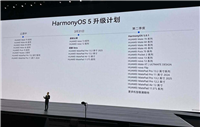引言
在大数据时代,选择一个高性能的分析数据库对业务的成功至关重要。starrocks作为一款次世代mpp(massively parallel processing)数据库,以其卓越的实时分析和多维分析能力而闻名。本篇文章将带您探讨starrocks的安装与使用,并探讨其作为快速向量数据库的潜力。
什么是starrocks
starrocks是一种高度并行的分析数据库管理系统,专为多维分析、实时分析和临时查询而设计。它凭借其向量化执行引擎,在clickbench基准测试中展现了卓越的性能,被广泛应用于各种分析场景。
特性与优势
子秒查询响应:利用向量化引擎,starrocks可以提供极快的查询响应时间。
多维度分析:支持高效处理多维度的数据分析任务。
实时分析:具备强大的实时数据分析能力,适合动态数据场景。
灵活的查询能力:支持复杂的ad-hoc查询,适合多种业务需求。
下载
文中使用版本为3.2.4,可通过官网自行下载
文章中使用的是存算一体架构,starrocks也支持存算分离架构
安装与配置
要开始使用starrocks,我们首先需要设置必要的软件环境。以下是安装步骤:
# 安装python mysql客户端 pip install pymysql
测试语句
create database example_db;
use example_db;
-- 新建用户并授权
create user 'testuser'@'%' identified by '123456';
grant all on databasename.* to 'testuser'@'%';
-- 仅包含一个 be,所以需要加properties( "replication_num" = "1" )
create table user_access (
uid int,
name varchar(64),
age int,
phone varchar(16),
last_access datetime,
credits double
)
properties( "replication_num" = "1" );
create table orders1 (
order_id bigint not null,
dt date not null,
user_id int not null,
good_id int not null,
cnt int not null,
revenue int not null
)
primary key (order_id)
distributed by hash (order_id)
properties( "replication_num" = "1" )
;
create table orders2 (
order_id bigint not null,
dt date not null,
merchant_id int not null,
user_id int not null,
good_id int not null,
good_name string not null,
price int not null,
cnt int not null,
revenue int not null,
state tinyint not null
)
primary key (order_id,dt,merchant_id)
partition by date_trunc('day', dt)
distributed by hash (merchant_id)
order by (dt,merchant_id)
properties (
"enable_persistent_index" = "true",
"replication_num" = "1"
);
create table detail (
event_time datetime not null comment "datetime of event",
event_type int not null comment "type of event",
user_id int comment "id of user",
device_code int comment "device code",
channel int comment "")
order by (event_time, event_type)
properties( "replication_num" = "1" );
create table aggregate_tbl (
site_id largeint not null comment "id of site",
date date not null comment "time of event",
city_code varchar(20) comment "city_code of user",
pv bigint sum default "0" comment "total page views"
)
aggregate key(site_id, date, city_code)
distributed by hash(site_id)
properties( "replication_num" = "1" );
create table orders4 (
create_time date not null comment "create time of an order",
order_id bigint not null comment "id of an order",
order_state int comment "state of an order",
total_price bigint comment "price of an order"
)
unique key(create_time, order_id)
distributed by hash(order_id);
properties( "replication_num" = "1" );
describe user_access;
show create table user_access;
-- 从本地文件导入数据
create table `table1`
(
`id` int(11) not null comment "用户 id",
`name` varchar(65533) null comment "用户姓名",
`score` int(11) not null comment "用户得分"
)
engine=olap
primary key(`id`)
distributed by hash(`id`)
properties( "replication_num" = "1" );
-- 查看 fe 节点的 ip 地址和 http 端口号。
show frontends;
-- 导入作业
curl --location-trusted -u root: -h "label:123" -h "expect:100-continue" -h "column_separator:," -h "columns: id, name, score" -t d:\\data\\test.csv -xput http://192.168.5.66:8030/api/example_db/table1/_stream_load
select * from table1;
接下来,我们将使用一个例子来说明如何在python中使用starrocks库。
代码示例
假设我们想要在starrocks中储存和查询向量数据。以下是一个简单的使用示例:
from langchain_community.vectorstores import starrocks
# 假设我们通过api代理服务连接到starrocks数据库
starrocks_client = starrocks(api_endpoint="{ai_url}") # 使用api代理服务提高访问稳定性
# 插入样本向量数据
vector_data = [0.1, 0.2, 0.3, 0.4]
starrocks_client.insert_vector("your_vector_table", vector_data)
# 查询向量
query_result = starrocks_client.query_vector("your_vector_table", query_vector=[0.1, 0.2, 0.3])
print("query result:", query_result)
这段代码展示了如何连接到starrocks数据库并执行基本的向量插入和查询操作。
常见问题和解决方案
连接超时:在某些地区,由于网络限制,api调用可能会超时。建议使用api代理服务来提高连接的稳定性和速度。
数据插入失败:检查数据库权限设置,并确保数据格式与表结构相匹配。
总结与进一步学习资源
starrocks作为高性能分析数据库,在实时数据处理和复杂查询场景中展现出色表现。对于想要深入了解starrocks的开发者,可以参考以下资源:
通过这些学习资源,您可以获得更多关于starrocks配置、优化和使用场景的深入知识。
参考资料
以上就是高性能分析数据库starrocks的安装与使用详解的详细内容,更多关于starrocks数据库安装的资料请关注代码网其它相关文章!



发表评论